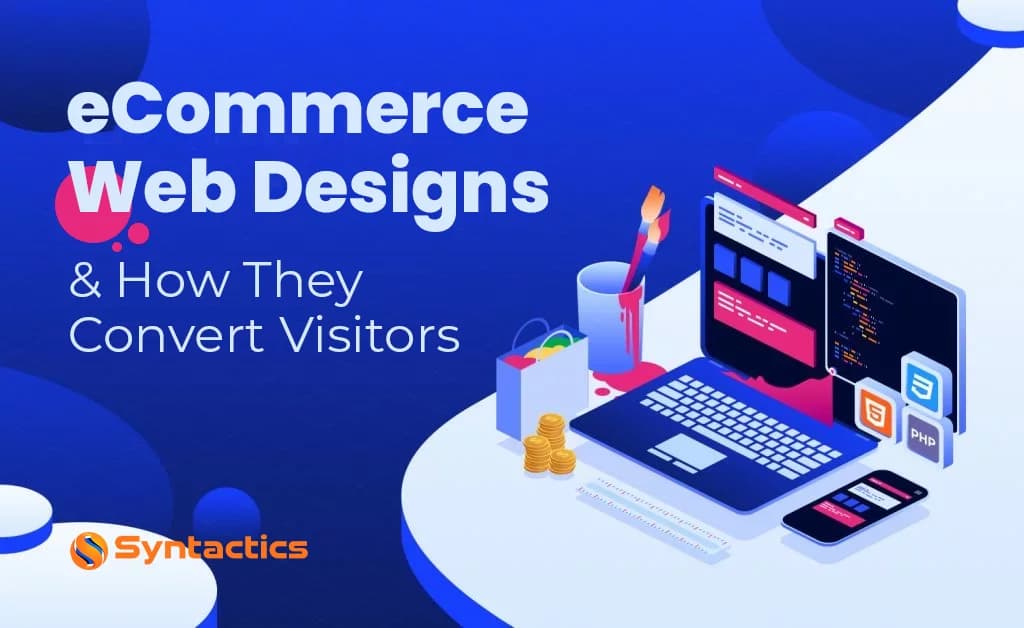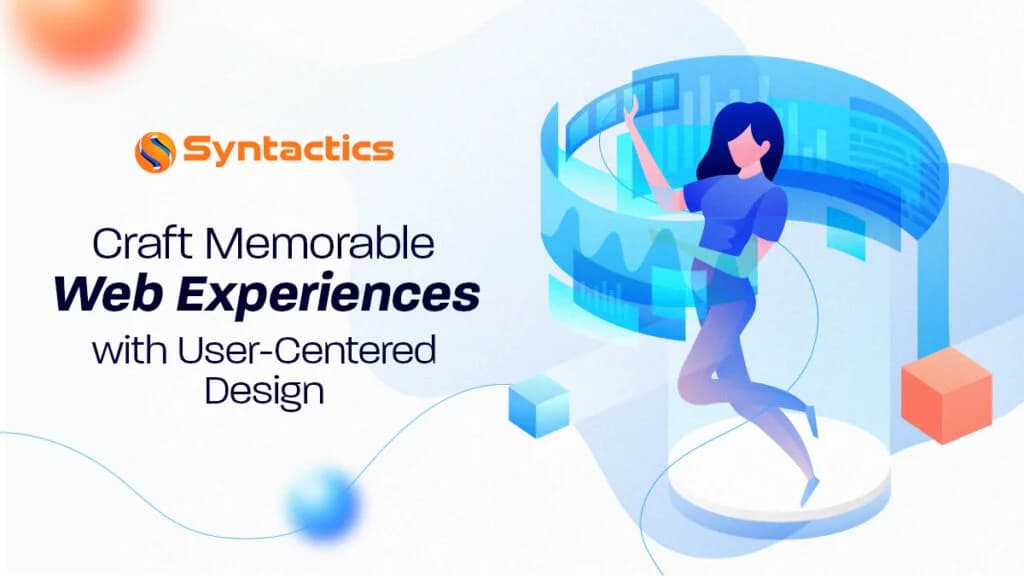
Hallmarks of an Eco-Friendly and Sustainable Web Design
Sustainable web design is a trend that’s gained significant popularity over the years. Website owners who are more conscious of its effects on nature can partner with web designers whose services align with sustainability!
According to the BBC, our gadgets, the Internet, and their systems account for 3.7% of global greenhouse emissions. Sustainable websites function on less energy and reduce emissions because they were created using development practices that promote energy efficiency.
Environmentally-friendly website design is one of the top web design trends of 2024. Continue reading to learn more about the industry’s efforts for sustainability and how to apply them to your website!
Hallmarks of an Eco-Friendly and Sustainable Web Design
One of the important considerations in creating an eco-friendly website design is energy efficiency. Though users might not directly feel it, the technology — including the Internet, data centers, and multiple devices — uses a significant amount of energy.
Website design leaves a lasting impression on users. After all, according to HubSpot, 94% of users’ first impressions are linked to design. It’s one of the factors that make a high-quality website, so it’s essential to consider eco-friendly approaches.
A web design company can address and mitigate the large amounts of energy consumption in different ways. Moreover, these have positive environmental impacts and are cost-efficient.
One of these approaches includes incorporating efficient coding practices. A few other examples of these practices include the following:
- Using energy-efficient libraries;
- Optimizing your code and assets, and
- Utilizing suitable data structures.
Other strategies designers could also do is through implementing server virtualization and Content Delivery Networks (CDNs). These servers improve the speed of content delivery by bringing it closer to users.
Moreover, they reduce the distance data needs to travel, positively impacting the environment.
Server virtualization refers to the division of a physical server into different unique virtual ones through a software application. Meanwhile, CDNs refer to geographically distributing groups of servers that cache content near end users.
Resource Conservation
Files, such as images, are one of the heaviest elements of a webpage. Optimizing these files is essential for loading times and reducing a site’s carbon footprint. After all, every interaction on the web utilizes electricity.
For instance, every time someone visits your website, their browser must create a Hypertext Transfer Protocol (HTTP) for information. While this is a necessary step with minimal consumption, it accumulates over time.
There are different ways on how to reduce your website’s HTTP requests, including:
- Evaluating your website’s performance and addressing the root issue.
- Checking how many requests the site makes at the moment.
- Eliminating unnecessary photos.
- Reducing the current images’ sizes.
- Asynchronously setting your website to load JavaScript files.
- Checking on other page parts and their impact on load time.
- Merging Cascading Style Sheets (CSS) files.
Accessibility and Inclusivity
Accessibility is critical to websites more than ever. Some of its key elements include alt text, color contrast, and keyboard accessibility. Web designers create a site that is usable by everyone.
The Web Content Accessibility Guidelines (WCAG) aid website development professionals in creating a site for all.
Thus, having an inclusive website design encourages users of different backgrounds to visit and interact with your site.
Examples of accessibility measures include adding alternative or alt text for images and multimedia content. Screen readers can use the alt text to describe or explain the media content to people with visual impairments.
There are different ways designers can test for compatibility with assistive technologies for people with disabilities. However, they must be aware of commonly accepted accessibility standards and equip themselves with the right tools to do this effectively.
Through Quality Assurance (QA) testing, professionals can ensure that the accessibility features are functioning properly, usable, and enjoyable.
Sustainable Content and Practices
One of the main goals of a website is to encourage customers or users to return. Creating high-quality, long-lasting content may reduce customer churn.
One way to reduce this is to provide a more user-friendly interface by considering the following:
- Creating a better User Interface (UI) design;
- Making the platform more navigable;
- Improving visual design, and
- Create better User Experience (UX) copy.
Customer retention is important for several reasons. Designers can integrate community-driven features into a website to maintain customer loyalty. For instance, although an eCommerce web design can initially convert visitors, you can enhance it to encourage better retention.
Web hosting services that promote environmental sustainability and function with less poor environmental impact are referred to as green hosting.
Typically, these services rely on renewable energy like wind, solar, or hydropower to promote energy efficiency and minimize consumption. In turn, this reduces carbon footprint by minimizing waste.
In addition, green hosting attracts environmentally conscious customers, which helps boost brand image.
On the other hand, carbon offset programs allow individuals or organizations to invest in projects to balance their carbon footprint.
Let’s say a major tech company wants to cancel out its significant carbon footprint by investing money into more eco-friendly or sustainable endeavors. For example, it can invest in solar power or reforestation organizations.
User Experience and Performance
Designers can follow a variety of sustainable efforts without compromising User Experience and performance. One way to practice sustainable UX design is to maintain a lower energy consumption for products.
As a result, your sustainable designs will produce efficient and user-friendly interactions. Ensuring faster loading times helps your site rank higher in SERPs and minimizes energy consumption.
Poor navigation is one of the web development mistakes developers should avoid. If users struggle to go through your site, they might choose to find other sites that offer similar content.
According to Website Statistics Every Marketer Should Know, 94% of online users said that the most important website feature is easy navigation.
Thus, a non-negotiable factor for designers is intuitive navigation, which helps users navigate a website efficiently. Seamless site interactions result in a minimized carbon footprint, which benefits the environment.
As previously mentioned, an optimized website would significantly reduce energy consumption. Incorporating an intuitive interface design and using efficient coding frameworks are other measures to produce an eco-friendly website. Moreover, QA testing is essential for web development success.
Environmental Impact Assessment
There are different ways designers can assess a website’s environmental impact, including the Life Cycle Assessment (LCA). This is a standardized assessment that considers a product’s entire lifecycle. In addition, designers can also use tools to evaluate sustainable web design efforts, including:
- EcoIndex;
- Website Carbon Calculator;
- PageSpeed Insights, etc.
Moreover, QA testing is non-negotiable in web design, as it examines a project’s overall performance. For instance, designers can incorporate regression testing to spot bugs or essential website fixes.
Another critical factor is setting sustainability goals and benchmarks. These objectives must be in line with the company’s environmental ideals. Furthermore, designers must also integrate quantitative benchmarks to determine the site’s positive environmental impact.
You can also engage stakeholders by raising awareness about how eco-friendly designs benefit both the company and the environment.
Best Practices for Sustainable Website Design
It’s important to incorporate sustainable alternatives in the design and development process. These can benefit both the environment and the website. These perks include:
- Improved UX;
- Boosted brand reputation, and
- Attracting environmentally conscious consumers.
Collaborating with clients and stakeholders with the same vision of sustainability is essential. A company’s efforts to help the environment should be a team effort and not solely the responsibility of the website designer.
More importantly, it is paramount that web design professionals continuously learn about eco-friendly web design trends. After all, one key element to success in one’s career is consistently developing one’s knowledge and skills.
Here’s a quick rundown of the essential things designers must do to boost sustainability:
- Conserving and optimizing resources;
- Incorporating accessibility and inclusivity features;
- Prioritizing User Experience and performance, and
- Assessing environmental impact.
Prioritize Sustainability Today
Designers can incorporate the hallmarks of sustainable web design to create a more environmentally friendly website. Additionally, these help improve the site’s overall UX since optimization results in faster loading times.
These efforts are a mixture of solutions to address environmental issues, making it a win for both companies and the environment.
Numerous industries are taking strides to create more eco-friendly efforts, including the website design sector. Elevate your brand with a web design company from the Philippines that’ll follow your company’s nature-friendly principles!
Frequently Asked Questions About Sustainability and Websites
Why is it important to be sustainable?
Sustainability is important for the following reasons:
- Preserving natural resources, ensuring a livable future for all, including present and future generations.
- Protecting the environment by tackling climate change, reducing pollution, and minimizing damage to the planet’s ecosystem.
- Making an impact on society and bringing meaningful conversations (ex., consumerism, company standards, and employee values) to the forefront.
- Business cost reduction via efficient use of resources.
What is the Sustainable Web Design Model?
The Sustainable Web Design Model (SWDM) is used to estimate greenhouse gas (GHG) emissions related to digital products such as websites. Its latest version has changed the estimation formula by separating operational and embodied emissions and updating the underlying data.
How do I choose a good web design company?
Here are some tips for selecting the ideal web design partner:
- Check their portfolio and experience
- Look for case studies
- Read reviews and testimonials from previous clients
- Consider your budget
- Ensure alignment with website requirements


















Comment 0